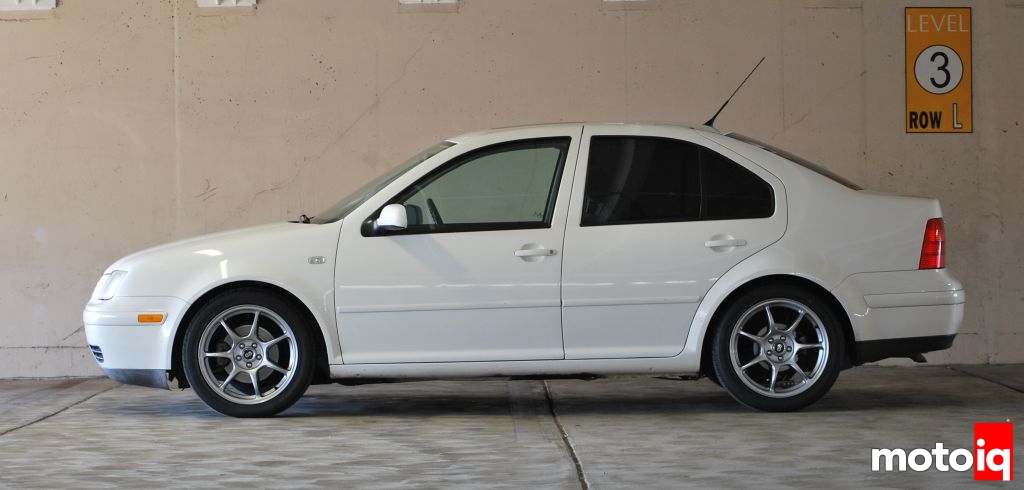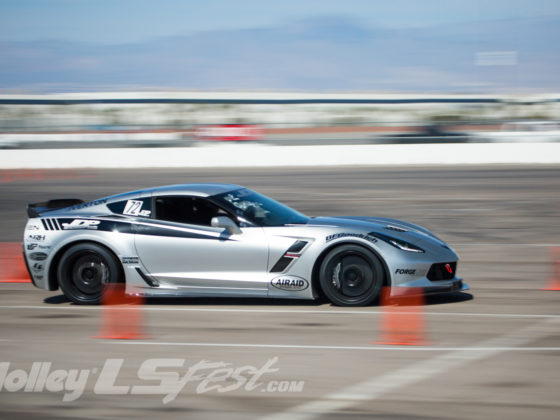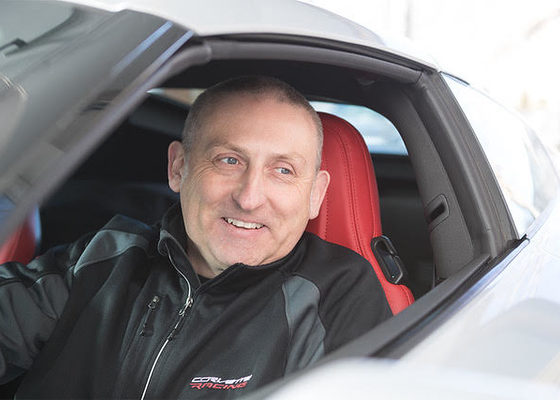,
Since throttleless Diesels require additional fuel to make more power, we knew that just adding a new bigger turbo with its increased airflow was not going to make more power by itself. While there weren’t any gains to be had just with the turbo, you couldn’t tell that from the driver’s seat! We would’ve bet on it making more power than stock as it felt faster, the engine ran smoother with significantly less vibration, and the top speed of the car was almost 25% higher. But the dyno does not lie and we were surprised to find that we still had less power than stock.
We think this is because that since the turbo is much more efficient, the airflow across the engine is much greater throwing our fuel mapping way off. Since diesel have no throttle valve and are thus effectively throttled by injection volume, the additional air has no fuel to burn and results in less power.
 Here is our best dyno run with the new Garrett turbo installed. This was still lower than stock, with 69.8HP and 118.2FTLB. We also re-installed the EGR system when we installed the turbo.
Here is our best dyno run with the new Garrett turbo installed. This was still lower than stock, with 69.8HP and 118.2FTLB. We also re-installed the EGR system when we installed the turbo.Next up was the installation of larger fuel injector nozzles from Kerma TDI. On a diesel, the nozzles on the end of the injector assembly control the fuel flow rate into the engine. These injector nozzles support power outputs from 120-190hp. They also have an optimized spray pattern, and more exacting tolerances than the factory pieces. With the bigger more precise nozzles and the greater airflow from the turbo we expected to see less smoke than other nozzles at a given power output, and improved fuel economy.
We took advantage of both KERMATDI’s injector calibration service and their hot swap service. The injector calibration service enables maximum power and efficiency. Digital flow validation is used to read and and set the flow rate on every new nozzle that they sell. This is performed on the nozzles prior to installation allowing KERMATDI to insure that every nozzle performs exactly to specification.
They can generate a complete report for every nozzle and compare every critical aspect of that nozzle’s performance. This is the equivalent of a flow bench for injector nozzles. They can evaluate delivery rate, peak delivery volume as well as response to flow at all ends of the flow range.
Kerma’s test system uses state of the art Flow Sensing Technology which evaluates flow and spray characteristics over the engines operating range by replicating the flow of the fuel passing thru the nozzle. Long gone are the graduated sampling tubes you may have seen on other injector test machines, the new generation test bench samples flow rates as often as 400 times per second allowing a complete evaluation of a nozzles performance not previously possible
With the hot swap service, they send you the nozzles, already installed on injectors, ready to install in the car. No need to worry about trying to clean the factory pieces, just take out the old and bolt in the new! They also included a loaner injector puller and new fuel lines. The injector puller threads on to the injector where the fuel line would be, and you use it’s slide hammer to gently and precisely remove them from the engine without damage. It would have taken much longer and a lot of colorful adjectives to remove them with out it. What a difference the right tools make!
 Here you can see the higher flowing Bosio DLC 1019 nozzles already installed on the injectors by Kerma.
Here you can see the higher flowing Bosio DLC 1019 nozzles already installed on the injectors by Kerma.
 The injectors are sealed in the head by the small copper washer that you see at the tip of the nozzle, and are held in place by these little rocker-arm looking retainers.
The injectors are sealed in the head by the small copper washer that you see at the tip of the nozzle, and are held in place by these little rocker-arm looking retainers.
 Here is the injector puller being put to use.
Here is the injector puller being put to use.



3 comments
What spring combo did you end up going with?
https://motoiq.com/project-hypermiler-handling-upgrades/
The car is currently running some Koni Orange shocks and mk4 springs from Nuespeed. I believe it’s the SofSport kit, but I’m not sure, it’s been a minute.